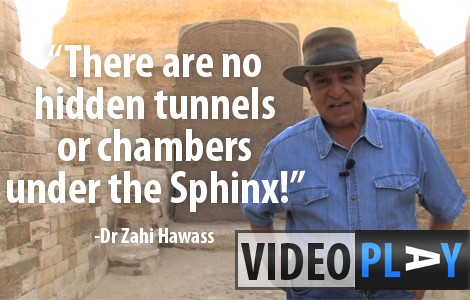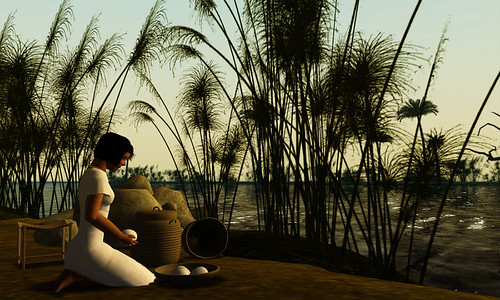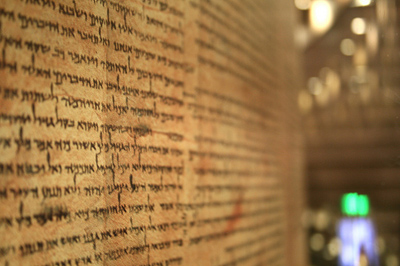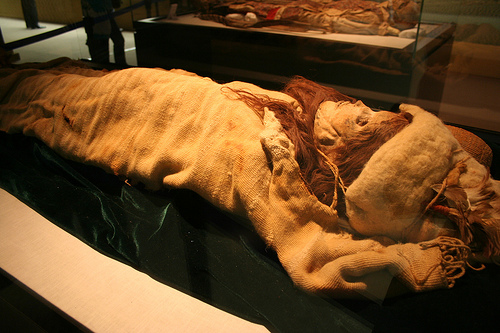A date has now been set for the return of some of the Vindolanda Tablets to the museum at Vindolanda in Northumberland, following an announcement this week that the UK’s Heritage Lottery Fund is to donate £4 million towards the costs. The date now set for some of the tablets to be housed at the Vindolanda museum is spring 2011 – they will come on loan from the British Museum for a period of five years, after which the loan can be renewed. The tablets – a collection of 1,600 documents etched on thin wooden boards – represent the earliest…
-
-
How do you keep the Great Sphinx’s paws dry? With a lot of work, that’s how! The latest Heritage Key video clip of Dr Zahi Hawass highlights his collaborative effort with Dr Mark Lehner in protecting the Sphinx from the danger of rising ground water, an issue that is threatening Egyptian heritage sites from Nubia to the Giza Plateau. The problem is as large as global warming and as local as sewage and agricultural runoff, but the insidious threat coming from below—the changing of the water tables—requires innovation as recent as cutting-edge mining technology and as ancient as divining water…
-
A clay tablet dating from the start of the second millennium BC is actually a list of literary texts from a Sumerian library. It originates from Nippur (in ancient Mesopotamia, modern-day lower Iraq), which was one of the most important Sumerian cities. It is on display at the Department of Oriental Antiquities at the Louvre. Origin & Collection On display at: The Louvre Reference Number: AO 5393 Physical properties Materials: Clay
-
Curator specializing in King Tut Dr. David P. Silverman serves as the curator, advisor and academic content creator for the exhibition Tutankhamun and the Golden Age of the Pharaohs. This exhibit truly completes a full circle for him; in 1977, he was in charge of curatorial content for the exhibition Treasures of Tutankhamun at Chicago’s Field Museum. He also co-authored the text panels and labels that traveled around the United States with the exhibition, which attracted an unprecedented 1.8 million visitors in its run at the Metropolitan Museum of Art in 1979 and inspired the phenomenon known as ‘Tutmania’. A…
-
Key Dates 1324 BC The figures date from around the time of the death of Tutankhamun, in 1324 BC. They were discovered, along with the rest of the treasures of Tut’s tomb, in 1922. Key People The figure depicted is 18th Dynasty Egyptian pharaoh Tutankhamun himself. They were found by Howard Carter, who located King Tut’s tomb. Key People: Tutankhamun Howard Carter These small statuettes of the famous boy king Tutankhamun astride a panther came in a pair and were located along with 32 other ritual figures inside a black resined wooden box in the treasury section of Tut’s tomb,…
-
The Museum of Fine Arts, Boston and 3D software company Dassault Systèmes have announced they will join forces in a partnership that aims to bring the power of industry as well as experimental 3D to the domain of archaeology. The MFA’s Giza Archives Project digital database will be “the first to benefit from the power of interactive, immersive and multi-platform 3D experiences” as the team intents to create new possibilities for the visualisation of archaeological data for both the scientific community and the general public. (preview video 1 – preview video 2) Visualisation of Archaeological Data for Education and Research…
-
Emperor Constantine had quite a splendid sense of humour for a Roman, but he couldn’t stand criticism. When in the fifth century one of his court jesters boasted that fools and jesters of the court could rule the empire better than the Emperor himself, Constantine decreed that the fools would get their chance at proving this claim. The ruler set aside one day in the year upon which a fool would reign the great Roman Empire. The first year, Constantine appointed a jester named Kugel as rule, who immediately ordained that only the absurd would be allowed on that day.…
-
In 2009, we saw the Terracotta Warriors tour America, racking up record attendance figures, while King Tut exhibitions criss-crossed the globe and the Staffordshire Hoard went on show in London just months after being unearthed in a West Midlands field by an avid metal detectorist. 2010 looks set to be equally as big a year for heritage exhibitions around the world. The iconic and controversial Lewis Chessmen will be reunited in Scotland for the first time in over 150 years in Edinburgh this May. The massive Shanghai World Expo will open around the same time, with a number exhibits themed…
-
South West Maritime Archaeological Group (SWMAG) have sent us some of the first pictures of the remarkable finds recovered from the site of Britain’s oldest shipwreck – a 3,000 year old Bronze Age trading vessel that sunk off the coast of Devonshire in southwest England around 900 BC. We blogged about its discovery on Tuesday. The wreck was located in just a few metres of water at the bottom of Wash Gully near Salcombe. When it went down, the boat was on its way back from the continent with a precious cargo of tin and copper ingots – key raw…
-
According to archaeologist Liu Qingzhu, trying to name the most important discoveries in China is like facing another, albeit seemingly more simple, question — which one tastes better: dumplings or rice? “Southerners from China will say rice is better, but northerners will say dumplings,” Liu said. “Then Westerners will say they like French food and that bread is good.” Listing the most important archaeological discoveries faces similar difficulties, he added. One finding may have had more relevance for one region of China, while not affecting the other. China’s history is also long and not so easy to cover. Still, Liu…







